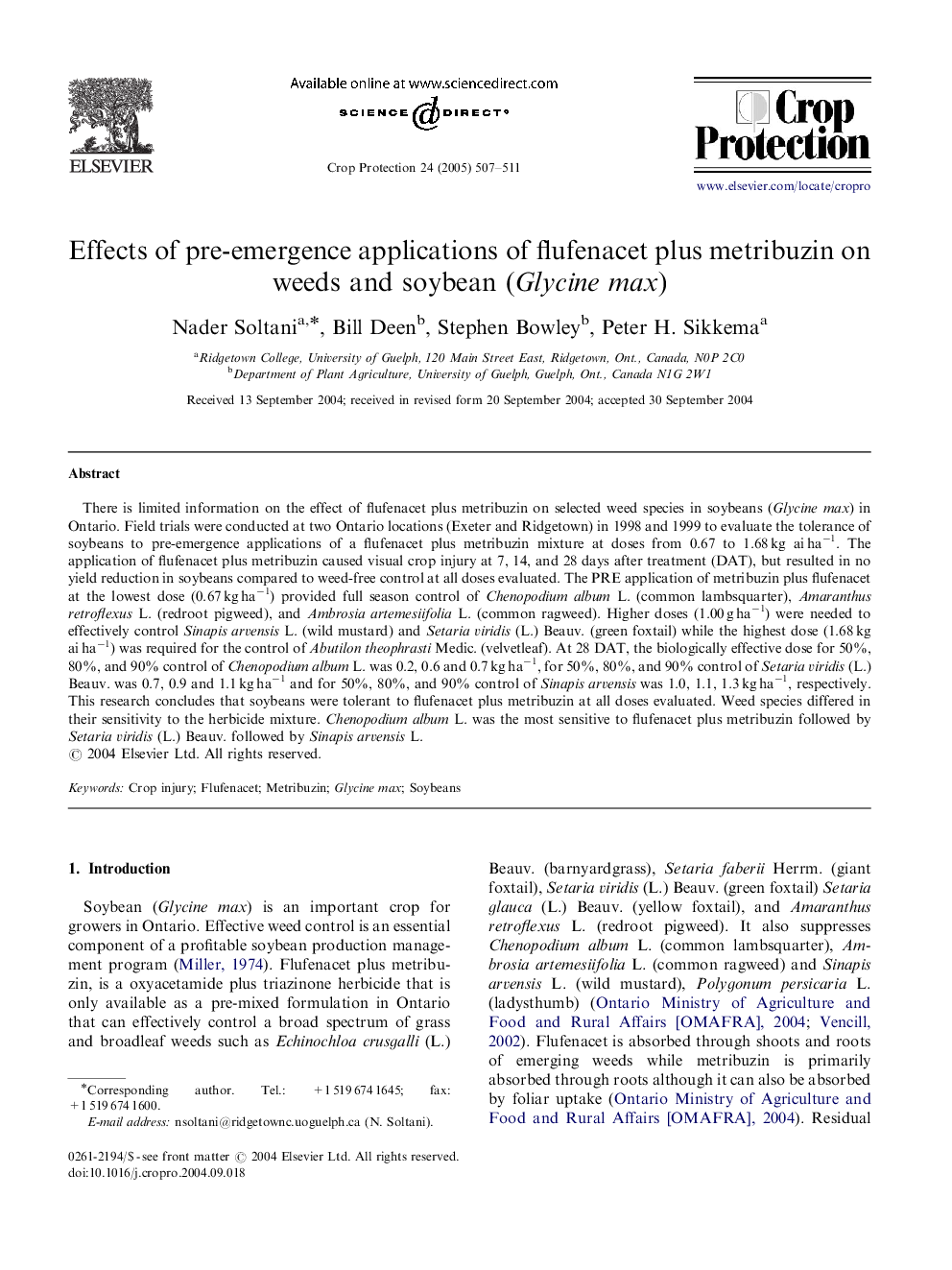| Article ID | Journal | Published Year | Pages | File Type |
|---|---|---|---|---|
| 9473096 | Crop Protection | 2005 | 5 Pages |
Abstract
There is limited information on the effect of flufenacet plus metribuzin on selected weed species in soybeans (Glycine max) in Ontario. Field trials were conducted at two Ontario locations (Exeter and Ridgetown) in 1998 and 1999 to evaluate the tolerance of soybeans to pre-emergence applications of a flufenacet plus metribuzin mixture at doses from 0.67 to 1.68 kg ai haâ1. The application of flufenacet plus metribuzin caused visual crop injury at 7, 14, and 28 days after treatment (DAT), but resulted in no yield reduction in soybeans compared to weed-free control at all doses evaluated. The PRE application of metribuzin plus flufenacet at the lowest dose (0.67 kg haâ1) provided full season control of Chenopodium album L. (common lambsquarter), Amaranthus retroflexus L. (redroot pigweed), and Ambrosia artemesiifolia L. (common ragweed). Higher doses (1.00 g haâ1) were needed to effectively control Sinapis arvensis L. (wild mustard) and Setaria viridis (L.) Beauv. (green foxtail) while the highest dose (1.68 kg ai haâ1) was required for the control of Abutilon theophrasti Medic. (velvetleaf). At 28 DAT, the biologically effective dose for 50%, 80%, and 90% control of Chenopodium album L. was 0.2, 0.6 and 0.7 kg haâ1, for 50%, 80%, and 90% control of Setaria viridis (L.) Beauv. was 0.7, 0.9 and 1.1 kg haâ1 and for 50%, 80%, and 90% control of Sinapis arvensis was 1.0, 1.1, 1.3 kg haâ1, respectively. This research concludes that soybeans were tolerant to flufenacet plus metribuzin at all doses evaluated. Weed species differed in their sensitivity to the herbicide mixture. Chenopodium album L. was the most sensitive to flufenacet plus metribuzin followed by Setaria viridis (L.) Beauv. followed by Sinapis arvensis L.
Related Topics
Life Sciences
Agricultural and Biological Sciences
Agronomy and Crop Science
Authors
Nader Soltani, Bill Deen, Stephen Bowley, Peter H. Sikkema,
